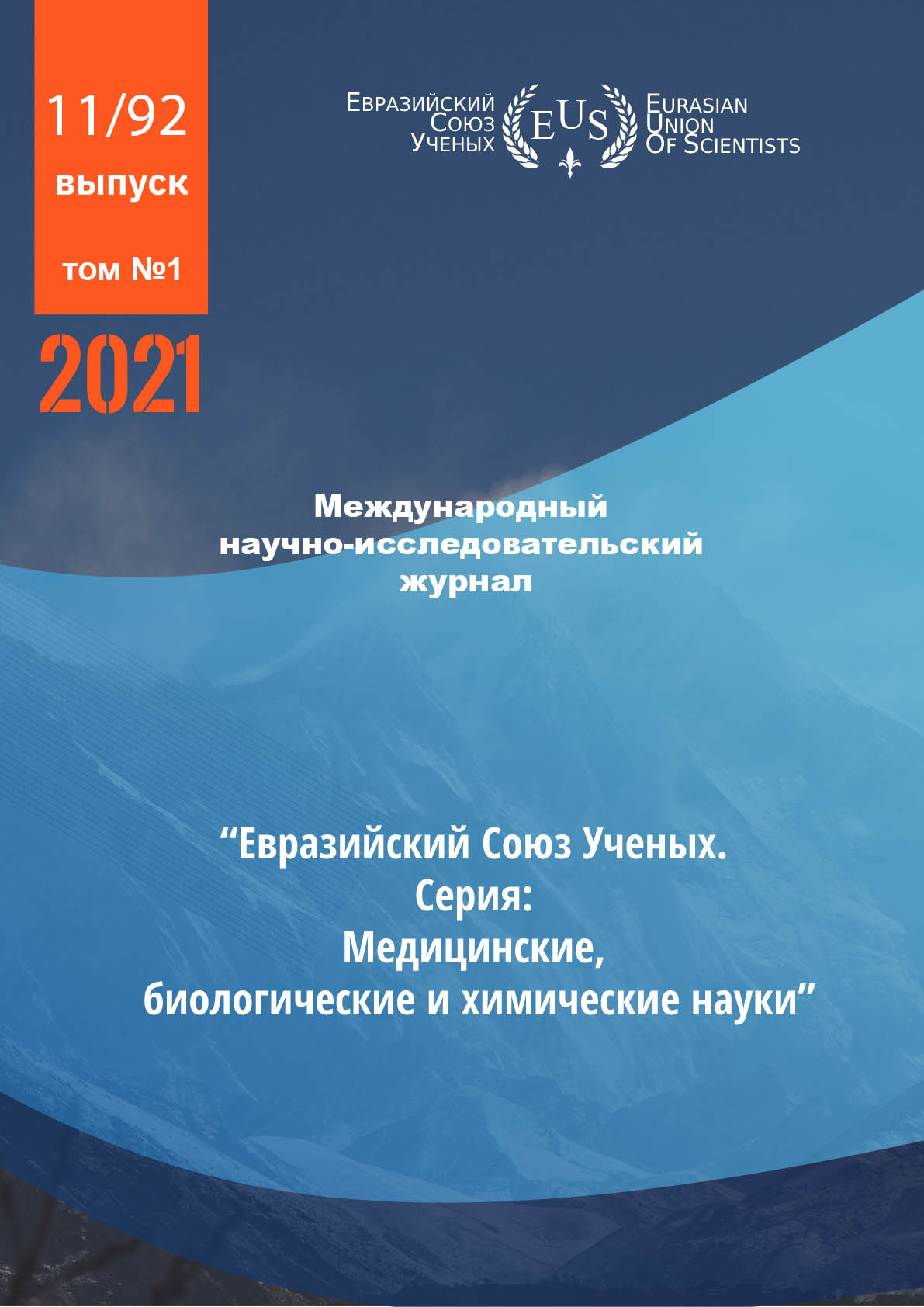FEATURES OF SUBJECTIVE CHARACTERISTICS OF THE PAINLESS PHANTOM SENSATIONS IN PATIENTS AFTER LOWER LIMBS AMPUTATION
Abstract
The article presents the research results of features of subjective spatial, qualitative and temporal characteristics in patients with painless phantom sensations after amputation of lower extremities. The influence of biological, psychological and social factors on their manifistation was studied.
The received data confirm the leading role of the biological factors in changing of the painless phantom sensations expression in majority of patients.
Subjective characteristics analysis of the painless phantom sensations showed the dependence their manifestation the time of day, duration of postoperative period and surgical intervention special aspects.
References
2. Davydov A.T., Tyukavin A.I., Rezvancev M.V., Kononchuk V.V., SHabanov P.D. Fantomnaya bol', rol' i mesto razlichnyh metodov lecheniya fantomno-bolevogo sindroma. [Phantom pain, the role and place of various treatments methods for phantom pain syndrome]. Obzory po klinicheskoj farmakologii i lekarstvennoj terapii = Reviews on Clinical Pharmacology and Drug Therapy, 2014. Vol. 12, № 1. pp. 35 – 58. (In Russ.).
3. Danilov A.B., Danilov Al.B. Upravlenie bol'yu. Biopsihosocial'nyj podhod [Pain management. Biopsychosocial approach] Moscow: «AMM PRESS», 2016. 636 p. (In Russ.).
4. Ishinova V.A., Gorchaninov O.N., Potemkina S.V., Navahovskaya L.YU, Stebel'kova O.A., Urvancev A.V., Krutickij V.K. Biopsihosocial'nyj model: osnova dlya sozdaniya effektivnyh programm medicinskoj reabilitacii dlya bol'nyh s hronicheskoj bol'yu [Biopsychosocial model: the basis for creating of effective medical rehabilitation programs for patients with chronic pain]. Rossijskij zhurnal boli = Russian pain journal, Volgograd. 2016. № 2. pp.10 -11. (In Russ.).
5. Ishinova V.A., Povorinskij A.A., Mityakova O.N. Osobennosti vzaimosvyazej mezhdu komponentami biopsihosocial'noj modeli u pacientov molodogo i srednego vozrasta, stradayushchih hronicheskoj bol'yu [Particularities of interactions between biopsychosocial model components in young and middle-aged patients suffering from chronic pain ]. Materialy 15-oj Evrazijskoj nauchnoj konferencii Donozologiya - 2020 «Faktory riska, populyacionnoe (individual'noe) zdorov'e v gigienicheskoj donozologicheskoj diagnostike = Materials of the 15th Eurasian Scientific Conference Donosology - 2020 “Risk factors, population (individual) health in hygienic prenosological diagnostics”, 2020. pp. 237239. (In Russ.).
6. Kryzhanovskii G. N. Obshchaya patofiziologiya nervnoi sistemy [General pathophysiology of the nervous system]. Moscow: Medicine, 1997. 352 p. (In Russ).
7. Kukushkin M. L. Bol' kak samostoyatel'naya forma bolezni [Pain as an independent form of disease]. Spravochnik vracha obshchej praktiki = General practitioner's handbook, 2007. № 12. pp. 28 – 29. (In Russ.).
8. Kukushkin M. L. Hronicheskaya bol' [Chronic Pain]. Nevrologiya, nejropsihiatriya, psihosomatika= Neurology, neuropsychiatry, psychosomatics, 2010. № 3. pp. 80-86. (In Russ.).
9. Rukovodstvo po protezirovaniyu i ortezirovaniyu [Prosthetics and Orthotics Guide]. Pod redakciej zasluzhennogo deyatelya nauki Rossii prof. A. N. Kejera i zasluzhennogo vracha Rossii prof. A. V. Rozhkova= Edited by Honored Scientist of Russia professor A. N. Keyer and Honored Doctor of Russia professor A .V. Rozhkova, Sankt-Peterburg. 1999. 624 p. (In Russ.).
10. Holmogorova A.B. .Biopsihosocial'naya model' kak metodologicheskaya osnova izucheniya psihicheskih rasstrojstv [Biopsychosocial model as a methodological basis for the study of mental disorders]. Social'naya i klinicheskaya psihiatriya = Social and Clinical psychiatry, 2002. № 3. pp. 97 - 105. (In Russ.).
11. Dawn M. Ehde, Joseph V. Czerniecki, Douglas G. Smith, Kellye M. Campbell, Thomas W. Edwards, Mark P. Jensen, Lawrence R. Robinson Chronic Pain Sensatuions, Phanton Pain, Residual Limb Pain and Other Regional Pain After Lower Limb Amputation. Arch. Phys. Med. Rehabilitation. 2000. V. 81. pp. 1039 – 1044.
1.12. Psychoprosthetics. Library of Congress Control Number. Editors Gallagher P., Desmond D., MacLachlan. M., London. 2008. 164 p.
CC BY-ND
A work licensed in this way allows the following:
1. The freedom to use and perform the work: The licensee must be allowed to make any use, private or public, of the work.
2. The freedom to study the work and apply the information: The licensee must be allowed to examine the work and to use the knowledge gained from the work in any way. The license may not, for example, restrict "reverse engineering."
2. The freedom to redistribute copies: Copies may be sold, swapped or given away for free, in the same form as the original.







